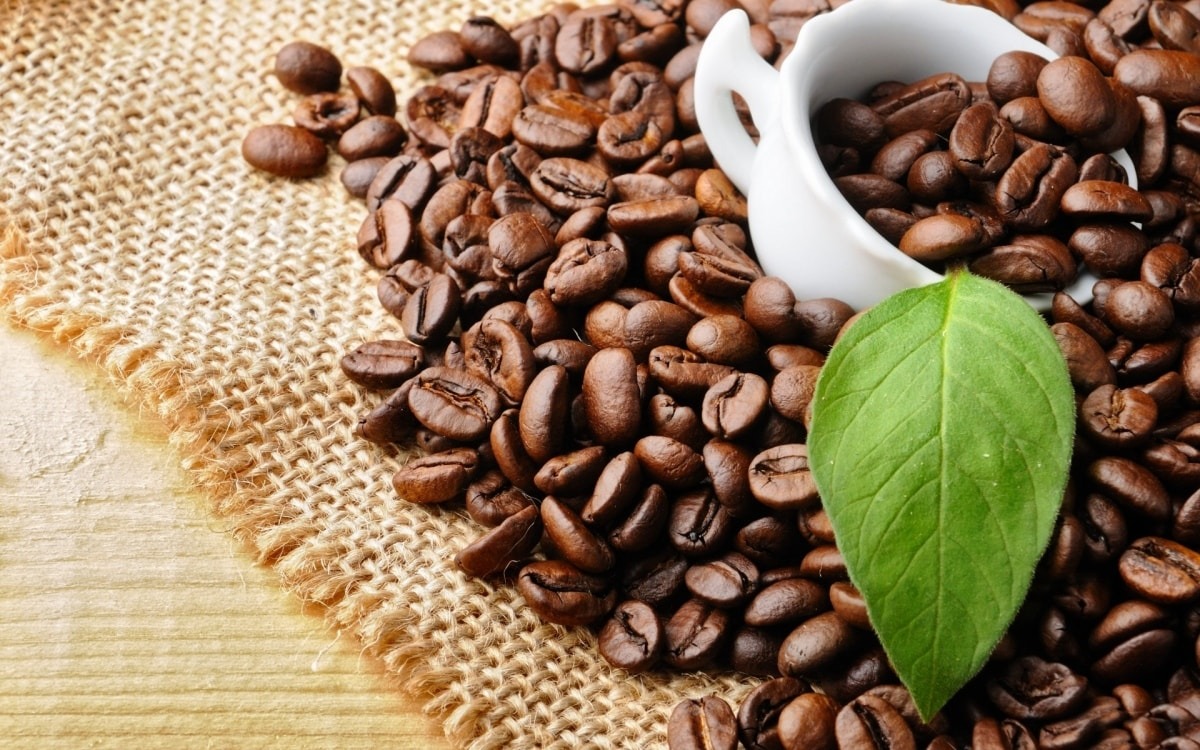Coffee freshness or Fresh coffee have become their own religious systems of specialty coffee. But why is it so important to stay fresh? Does fresh coffee enhance its inherent quality, consistency or flavor potential? And more importantly, how do we measure coffee freshness? Although the title of the article refers to Fresh-coffee, the focus of this article will be on issues related to coffee freshness – with the term Freshness of coffee.
1. What is freshness?
Since the inception of the specialty coffee movement, freshness has been one of the central pillars of Specialty Coffee. “Freshness” is defined as when the coffee retains its original qualities. Fresh, commonly understood as coffee that has just roasted, ground within a few days, immediately extracted and consumed. While there is no denying this important role freshness plays in high-quality coffee, scientific measurements of freshness are still very vague – no one knows what it is, “Freshness” is merely a subjective description in the perception of each person.
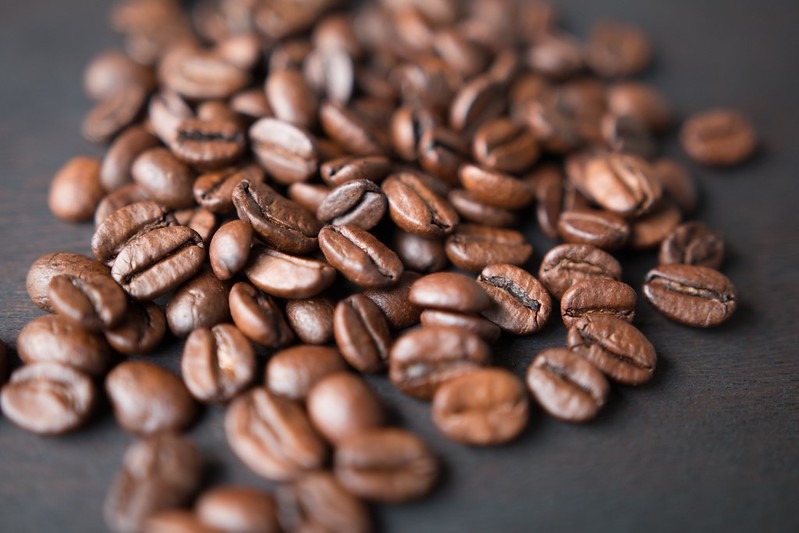
Including many course elements, but “Freshness” is still a purely sensory concept
Everyone wants coffee freshness. Even if you grind the coffee and let it sit for 2 minutes, there are people who will say it’s not good; you have to immediately take the extraction; It has become a religion, especially Espresso – Chahan Yeretzian.
However, coffee is an elusive product – as soon as it roasts, it begins to grow, change and lose its freshness. Research on coffee freshness focuses on two areas related to changes that occur during storage. chemical changes to coffee aromas and physical changes related to peaches CO2 emissions. Both of these problems interact with each other, causing the coffee to gradually lose its freshness.
2. Factors affecting the freshness of coffee
We’ll first approach the topic of fresh coffee, by identifying the factors that degrade coffee including: oxygen, moisture, temperature, roasting degree – and of course, time. At any scale, all of these factors can degrade coffee quality in different ways.
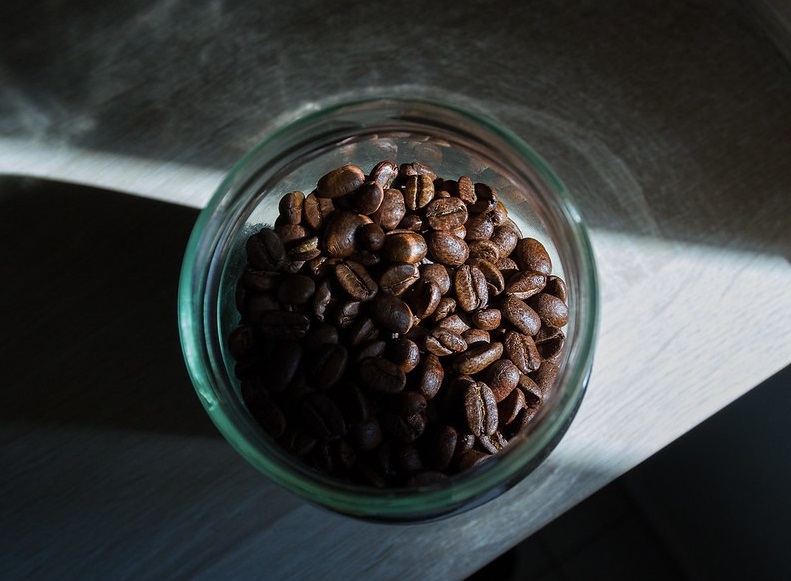
Light, temperature, warmth, air all make coffee “age” every day
Researchers at ZHAW* show that oxidation can significantly reduce the shelf life of roasted coffee. For example, simply reducing the oxygen content to 0.5% in a coffee container can increase shelf life by up to 20 times. Second, because the aqueous environment favors the movement of molecules and accelerates the oxidation reactions, it has shown that the high humidity environment acts as a catalyst for aging in coffee.
One of the typical flavors of degraded coffee is rancidity – caused by the breakdown of lipids during oxidation; In Arabica roasted coffee, lipids account for about 15% of the dry weight (Illy and Viani 2005) and easily oxidized even under vacuum packaging – because of the presence of free radicals generated during roasting.
Finally, Temperature affects the rate of coffee degradation both chemically and physically. Chemically, temperature positively correlated with the kinetics of chemical reactions. In other words, with warmer temperatures all chemical reactions in coffee accelerated. Physically, the pressure and concentration of diffusion between the coffee and the environment are also affected by temperature. On the other hand, heat not only causes the loss of volatile flavor substances, but also the formation of new flavor compounds that cause undesirable flavors in the coffee extract.
3. Coffee roasting and freshness
On the other hand, the freshness of coffee is not determined solely from the limitation of post-roast variations. For example, for Counter Culture Coffee – A pioneering roaster for the third wave of coffee. For them, coffee is freshest if and only if it roasts from fresh beans. So the way coffee is picked, processed, dried, preserved and transported has a huge impact on the shelf life of green coffee. In other words, the fresher the green coffee, the more advantageous it is after roasting retains its flavor potential as high as possible.
One of the most important aspects of green coffee stability over time is limiting the moisture content to the 9-12% range. This allows unroasted coffee to remain stable and not negatively affected by moisture, such as mold or spongy, soft. Counter Culture also recommends roasting coffee as soon as possible after it leaves the processing station. In most cases that means the coffee will be roasted within four months of proper storage.
4. Keep coffee fresh right after roasting
For starters, you can measure the freshness of your coffee in two way. Firstly through aroma, this is one of the most important & simple factors – like a freshly baked baguette. In the oven, freshly roasted coffee is considered to be the freshest, and in this way the coffee loses its freshness in just a day like an old loaf of bread. Another attribute to consider is the amount of Carbon Dioxide produces during and after the roasting process. For CO2 the problem is more complicated, but basically if there is too much CO2 in the coffee, the whole extraction process will be limited.
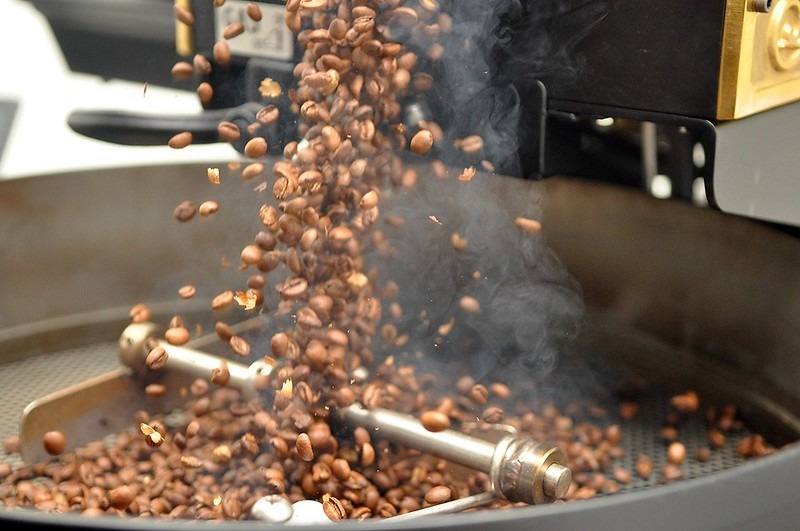
Not only giving off aroma, after roasting, coffee “releases air” like a living organism
Unlike bread, immediately after roasting, your coffee is like “a living organism”. It is giving off a lot of gas and is constantly growing. So in that first week, the concept of loss of freshness is only in terms of scent, but in terms of CO2, you would say it is growing and not losing freshness. The general scenario is to use coffee within two to four weeks of roasting for best flavor – Counter Culture Coffee.
5. Ensure the freshness of the coffee in the preparation
How long should coffee rest before brewing?
To answer this question, we have to go back to the laboratory, where the study of physical changes after roasting of coffee beans focuses on the relatively large amount of Carbon Dioxide released during roasting. . Tests from SCA show that up to 2% of freshly roasted coffee‘s weight is trapped within its porous structure. At the same time, studies also show that the faster and deeper the roasting process, the more CO2 released. After the first week, the coffee begins to soften; at this point it has lost about 60% of its CO2, so it becomes ‘calm’ and more stable.
On the other hand, during the first week after roasting, the accumulation of Carbon Dioxide in coffee packages that use a check valve will help to partially inhibit the oxidation process. Since the release of CO2 will push oxygen out of the coffee packaging, the CO2 concentration in the coffee package can now reach 80% and significantly reduce the oxygen content, thus slowing down the aroma change for a short period of time. longer period of time.
6. Should it be frozen to keep coffee fresh?
Studies at ZHAW* show that, the lower the temperature, the slower the degradation of coffee beans; although the process does not stop completely. So should we keep coffee in cold storage?
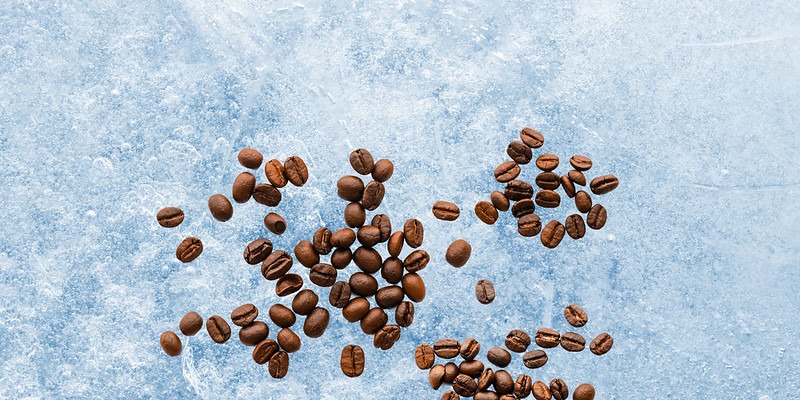
Frozen coffee, why not!
All the changes we’ve mentioned, especially when it comes to scent, will be slowed by half every 10 degrees below room temperature. In other words, at room temperature, coffee immediately after roasting can theoretically guarantee freshness for one to four weeks, and from three months to a year if stored at -25oC. However, in fact, you should not freeze coffee because the negative temperature can change the structure and cause the beans to crack.
But the real issue that you need to consider when freezing or refrigerating coffee. That is, you take the coffee out of the fridge and open the packaging, exposing it to warmer & more humid air will result in water vapor condensation on the coffee and a negative impact on the aroma and grain structure. Therefore, the damage that occurs when you open the bag of cold coffee will outweigh the benefit from slowing down the degradation process when refrigerated.
7. Make coffee, right after grinding
If you look at coffee beans with an electron microscope, you can see that it is extremely porous. That’s why we can extract a lot of solutes from coffee just by passing hot water over it. However, a coffee bean is similar to a fortress, the area in direct contact is very small. When you grind coffee, you create a multitude of small fragments with a surface area much larger than its mass; which interact with the air molecules faster and lose their freshness over time. multiple.
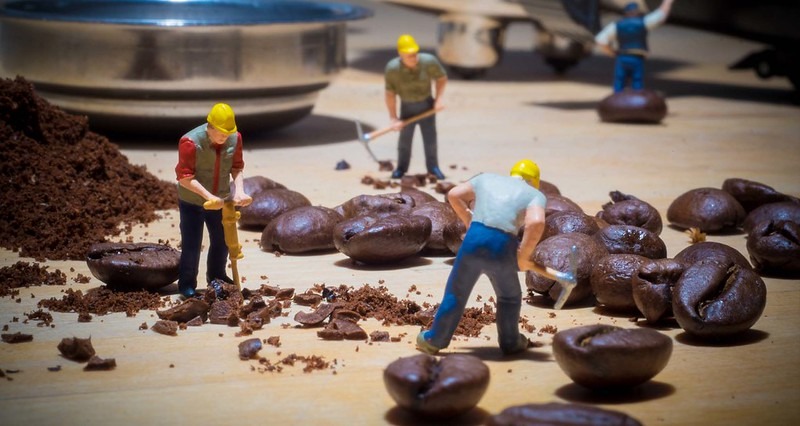
When broken, coffee almost immediately loses its freshness
For Espresso – the only child of the specialty coffee industry, freshness can adhere to as a religion; Hold the coffee for a week before brewing, and immediately after grinding, begin extraction. That’s all about guaranteeing the freshness of the coffee. However, for other beverages, especially cold brew and nitro brews, it will allow you to be more creative.
After all, Freshness is still a relative factor, essential but always allowing flexibility and creativity. Since we don’t know if grinding 30 minutes, or an hour before brewing, makes for a better cup of coffee, we have every right to go against the concept of absolute freshness, because coffee is extracted “Less fresh” production can reveal unique flavor profiles that we have not seen when strictly adhered to freshness.
——————————————————————————————————-
We are here to match your requirement. Do not hesitate to contact us for the best price!
PRINCE COFFEE
ADD: 41/49 Huynh Thuc Khang Street, Dong Da District, HaNoi, VietNam
EMAIL: sales@fineco.com
HOTLINE: +84 966420187 (WHATSAPP/VIBER/ZALO)



